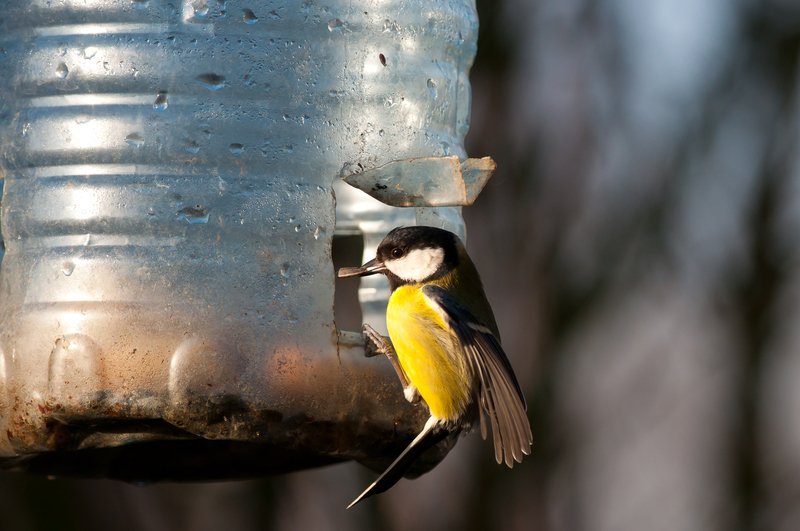Reducing Garden Waste at Home
Posted on 10/04/2025
The modern gardener faces various challenges, one of the most pressing being the management of garden waste. With increasing awareness of environmental issues, it's imperative to adopt practices that not only beautify our surroundings but also contribute to sustainability. Fortunately, with some knowledge and effort, reducing garden waste at home is entirely feasible. This article delves into effective strategies to achieve this, ensuring your garden stays lush while being eco-friendly.
Understanding Garden Waste
Garden waste encompasses all biodegradable material generated from garden activities. This includes grass clippings, leaves, branches, weeds, and even old plant pots. While these materials naturally decompose, improper disposal can lead to significant environmental issues. For instance, sending garden waste to landfills leads to the production of methane, a potent greenhouse gas. Understanding what constitutes garden waste is the first step in managing it effectively.

Composting: The Heart of Garden Waste Reduction
One of the most effective ways to reduce garden waste is through composting. Composting involves breaking down organic material into a nutrient-rich soil amendment, enriching your garden while keeping waste out of landfills.
How to Start Composting
1. Choose a Compost Bin or Pile: Depending on your space and preference, you can opt for a compost bin or a simple compost pile. Bins help contain the compost and speed up the decomposition process.
2. Gather Materials: Collect greens (nitrogen-rich materials like grass clippings and vegetable scraps) and browns (carbon-rich materials like dry leaves and branches). A balance of these materials is crucial for effective composting.
3. Layer the Materials: Begin by placing a layer of coarse materials (e.g., small branches) at the bottom to aid air circulation. Then, alternate between layers of greens and browns.
4. Maintain the Pile: Keep the compost pile moist, but not soggy, and turn it regularly to promote aeration and expedite decomposition.
Benefits of Composting
- Reduces Landfill Waste: Composting diverts significant amounts of organic matter from landfills.
- Enriches Soil: The resulting compost can be used to improve soil structure, enhance water retention, and provide essential nutrients to plants.
- Saves Money: By creating your own compost, you reduce the need for commercial fertilizers and soil conditioners.
Mulching: Another Effective Strategy
Mulching involves covering the soil with a layer of material to retain moisture, suppress weeds, and enhance soil health. Organic mulches, like grass clippings, leaves, and bark, can also return valuable nutrients to the soil as they decompose.
How to Mulch Effectively
1. Choose the Right Mulch: Depending on your garden's needs, select an appropriate organic mulch. Common options include shredded leaves, wood chips, and grass clippings.
2. Prepare the Soil: Before applying mulch, ensure the soil is weed-free and adequately watered.
3. Apply the Mulch: Spread a layer of mulch (typically 2-4 inches thick) around plants, avoiding direct contact with stems and trunks to prevent rot.
Benefits of Mulching
- Weed Suppression: A thick layer of mulch inhibits weed growth by blocking sunlight.
- Improved Soil Health: As organic mulch decomposes, it enriches the soil with nutrients.
- Water Conservation: Mulch helps retain soil moisture, reducing the need for frequent watering.
Grasscycling: A Simple, Effective Practice
Grasscycling is the practice of leaving grass clippings on the lawn after mowing. This technique returns valuable nutrients to the soil, reduces the need for chemical fertilizers, and significantly cuts down on yard waste.
How to Grasscycle
1. Mow Regularly: Mow your lawn frequently enough to ensure that no more than one-third of the grass blade is removed at one time.
2. Use the Right Mower: A mulching mower is ideal as it finely chops the clippings, allowing them to decompose more quickly.
Benefits of Grasscycling
- Nutrient Recycling: Grasscycling provides a natural source of nitrogen, reducing the need for synthetic fertilizers.
- Reduced Waste: By leaving clippings on the lawn, you prevent them from ending up in landfills.
- Time and Cost Savings: Grasscycling eliminates the time and effort needed to bag clippings, and the natural fertilization reduces lawn care costs.
Repurposing Garden Waste
Another way to manage garden waste is by repurposing it. Here are a few creative ideas:
Leaf Mold
Leaf mold, created by decomposing leaves, is an excellent soil conditioner.
- How to Make Leaf Mold: Collect fallen leaves and store them in a wire bin or black plastic bag with holes. Moisten the leaves and leave them to decompose for about a year.
- Benefits: Leaf mold improves soil structure, increases water retention, and is packed with beneficial microorganisms.
Chipping and Shredding
Branches and woody materials can be chipped or shredded to create mulch or pathways.
- Using Chipped Wood: Spread chipped wood around trees and shrubs or on garden paths to suppress weeds and conserve moisture.
Natural Pest Control
Certain garden waste, like coffee grounds or crushed eggshells, can deter pests.
- Coffee Grounds: Sprinkle them around plants to repel slugs and snails.
- Eggshells: Crushed eggshells can deter soft-bodied pests and provide calcium to the soil.
Community Involvement and Resources
If your garden generates more waste than you can manage, consider leveraging community resources.
- Local Composting Programs: Many municipalities offer composting programs or drop-off sites for garden waste.
- Community Gardens: Engage with community gardens that might need extra organic material for composting or mulching.
- Workshops and Events: Participate in local workshops to learn more about sustainable gardening practices.

Reducing Garden Waste Through Smart Plant Choices
Choosing the right plants can significantly reduce garden waste. Opt for native plants, which are well-adapted to your local climate and soil, and require less maintenance.
- Perennials Over Annuals: Perennials come back year after year, reducing the need for replanting and generating less waste compared to annuals.
- Drought-Tolerant Plants: Plants that require less water reduce the need for extensive garden maintenance.
- Low Maintenance Varieties: Select plants that require minimal pruning and produce less litter.
Conclusion: Embracing a Sustainable Gardening Ethos
Reducing garden waste at home requires a thoughtful approach that integrates various sustainable practices. Composting, mulching, grasscycling, and repurposing waste are effective strategies that not only minimize environmental impact but also enhance garden health and beauty. By making informed plant choices and getting involved with community resources, you can further promote a sustainable gardening ethos. Remember, every small effort contributes to a greener, more sustainable world.
By adopting these practices, you transform your garden into a model of environmental stewardship, showcasing how small changes in garden management can have significant impacts on reducing waste and promoting ecological balance.

 020 3744 5712
020 3744 5712










